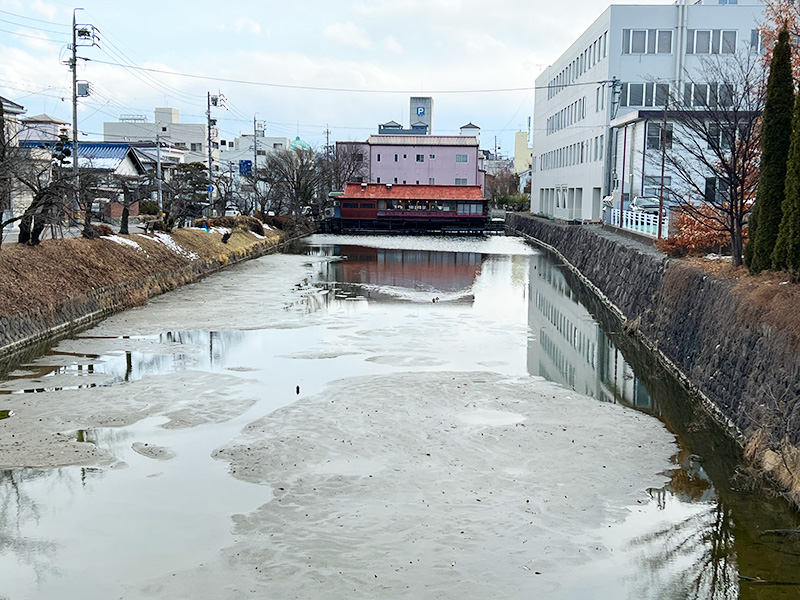
かき船
Kakifune展示アーティストArtist
松本市丸の内7-30
屋外展示
建築年 昭和8(1933)年(当初は船であった)
設計者 不明
施工者 船大工 藤原卓美他
〈カキ船〉とは、河川に船体を係留して広島の牡蠣料理を提供する屋形船で、大阪から広がり、明治15(1882)年に77隻、昭和15(1940)年には150隻ほどが全国で営業していたという。現在、河川上で営業を続けているのは数隻でいわば「絶滅危惧種」とも言える。松本城の惣濠で営業を開始したのは昭和8(1933)年で、広島で建造された船を解体して鉄道で運び、広島の船大工と大工が半年かけて完成させた。
当初は屋形船として営業していたが、昭和12(1937)年頃に船底から浸水したため、堀に打った杭の上に船を乗せる形で桟橋に固定された。水に浮かぶ「船」ではなくなったが、現存する〈カキ船〉の民俗資料としての役割が求められている。
入口両脇はモルタル塗りの壁になっているが、当初は格子の出窓になっており、豪華な造りであった。入口庇のケヤキ材の曲げ垂木は、1本を削り出すのにまる一日かかったという。船は桟橋と縁を切って造られており、土手に係留する形で堀に浮かべていた。畳敷きの中廊下を挟んで客室が両側にあるため、船が傾かないように座ってもらう場所を人数調整する必要があった。
Oyster boat
Year of construction: 1933 (Showa 8) (originally a ship)
Architect: unknown
Builder: Shipbuilder Takumi Fujiwara and others
Oyster boats are houseboats moored on rivers to serve Hiroshima oyster dishes. Today, only a few boats continue to operate on rivers, making them an “endangered species,” so to speak. The boats were built in Hiroshima, dismantled and transported by railroad, and completed by carpenters and shipbuilders in Hiroshima over a period of six months.
The boat was initially operated as a houseboat, but around 1937 (Showa 12), the bottom of the boat flooded, so it was fixed to the pier in the form of a boat on piles driven into the moat. Although it is no longer a “boat” that floats on the water, it is still required to serve as a folklore document of existing “oyster boats.
Both sides of the entrance are mortared walls, but the original structure was luxurious, with latticework bay windows. The bent zelkova rafters of the entrance eaves are said to have taken a whole day to carve out. The boats were built with the pier cut off from the edge and floated on the moat, moored to the bank. Because the guest rooms were located on both sides of a tatami-matted central corridor, it was necessary to adjust the number of people sitting where they would be seated to prevent the boat from tilting.